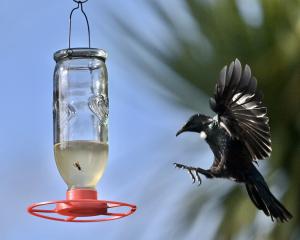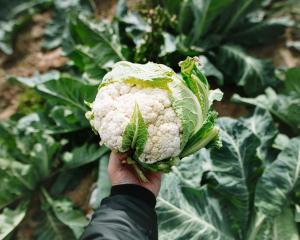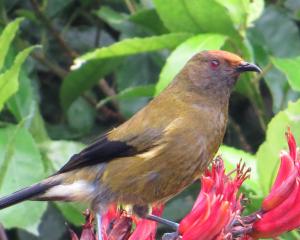If you want something unique in your flower garden, Gillian Vine suggests breeding your own dahlias.
Raising new plant varieties can be a slow process. It generally takes two or three years to get flowers on irises, lilies or roses grown from seed, while magnolias are only for those in for the long haul, as it can be 15 years before seedlings bloom.
For fast results, dahlias are ideal, as seed sown in October will produce plants that flower the following February.
The easiest way to get started is simply by cutting stems with ripe seed heads now, storing them in paper bags until spring and sowing the seed. You can get a surprising colour range but are unlikely to breed a show-stopper this way - Invercargill dahlia breeder Walter Jack says the odds are about one in 500.
Last autumn, I picked a seed head from a white collerette dahlia, Cherubino.
Walter says my choice of white was a good one, as that would give the best colour range. I sowed the seed indoors in October and eventually had 30 little seedlings that were transplanted into the garden after the frosts had gone. To date, I have had flowers in four shades of red, as well as white, yellow and a couple of multi-coloured blooms. As the nearest dahlia was a lavender ball type, I thought it would have been the pollen parent and expected some mauve shades, but no.
It is well-documented that single dahlias are dominant, so I haven't been too surprised that all my efforts have been single with not a collerette or double among them. Interesting, though, there is some leaf variation, in one case very like an anemone-centred dahlia a few metres away from the collerette.
As the gene for doubles is recessive, it would be interesting to save the seed head of one of the newbies, sow the seed next spring and see what that produces.
With double dahlias, such as ball and cactus types, as flowers die, they tend to rot at the back.
Pulling off the back petals overcomes this, while plucking the centre ones to expose the pollen encourages bees.
If you want to be more scientific, choose two dahlias to cross, one as the pollen parent, the other as the seed parent, whose seeds you will save.
Ideally, the latter should be a variety that is known to produce good seed heads, while the pollen parent should be one that thickly coats bees with pollen.
Using a paintbrush or your finger, transfer pollen to the seed parent, cover the flower with a paper bag and leave for the seeds to develop.
If you produce that one-in-500 plant, it can be sent to one of the country's two trial gardens, at Hinds and Te Awamutu, to be assessed. If they make the grade, two judges certify them before the new dahlias are registered on the national list.
With New Zealand's tight import controls, developing more varieties of our own makes sense.
But, Walter Jack adds, don't expect to get rich. Just do it for fun.
Dahlias like rich soil, so enrich it with well-rotted manure, compost or general fertiliser before planting seedlings or tubers.
Slug and snail control is essential, as they will demolish new shoots. A thick layer of crushed egg shells around the plants helps - or commercial slug bait can be used.
Earwigs attack the flowers but can be controlled by spraying the buds with Ripcord or rose spray when the first bit of colour is showing. These sprays are toxic to bees, so you may prefer the old newspaper method: take pieces of newspaper and crumple into balls small enough to tuck into the plants below the flower buds.
Every couple of days, lift out the paper balls and drop them into a bucket of boiling water. The paper and water, when cool, can be added to the compost bin.
For an ongoing display until the frosts kill the plants, deadhead regularly. When deadheading, drop the spent flowers into boiling water to catch any stray earwigs.
Plants can be lifted in late autumn and stored in damp sawdust until spring, when they are replanted.
Alternatively, they can be left in the ground over winter but if you do this, make sure the tubers are well covered, as any bits poking out will get frosted and die.












